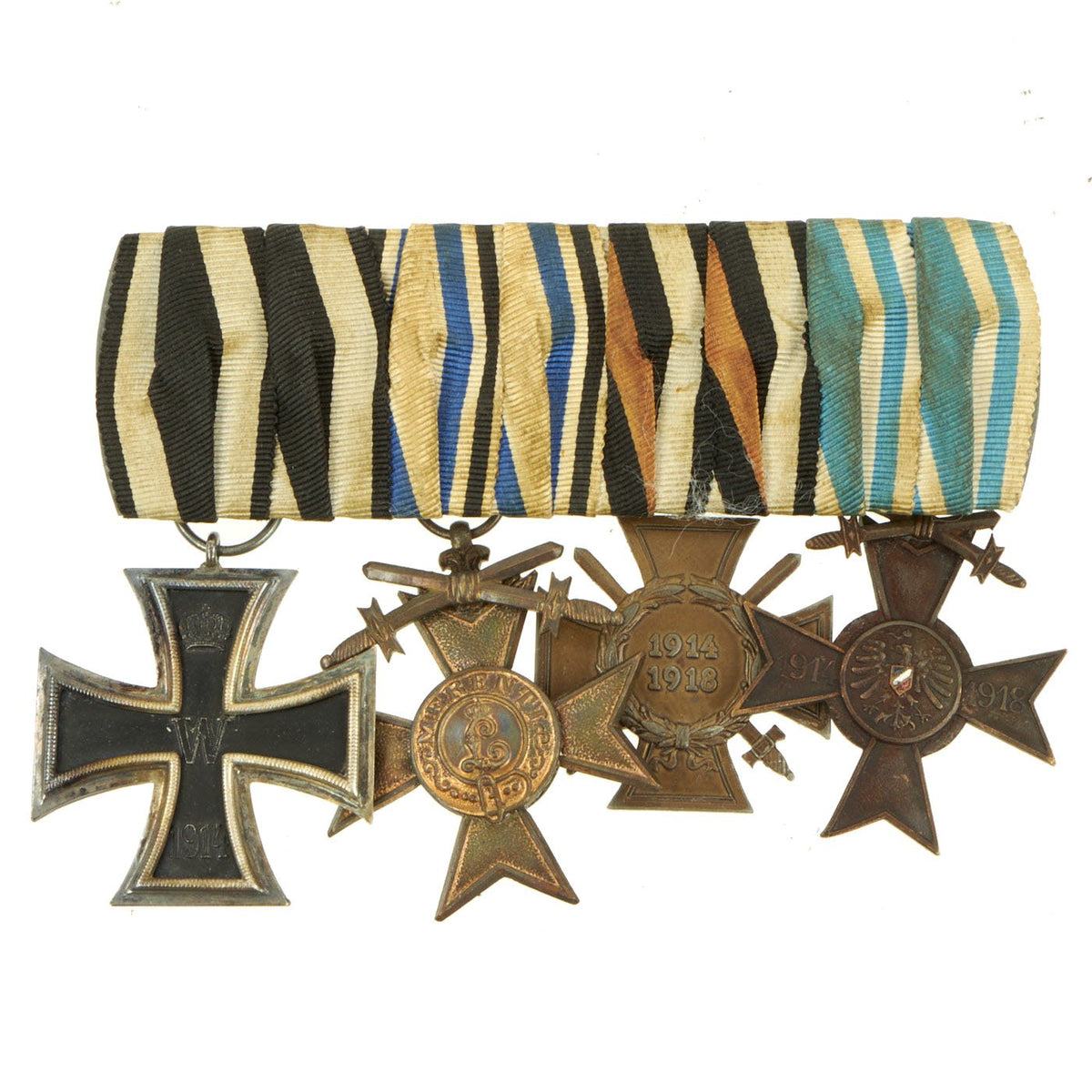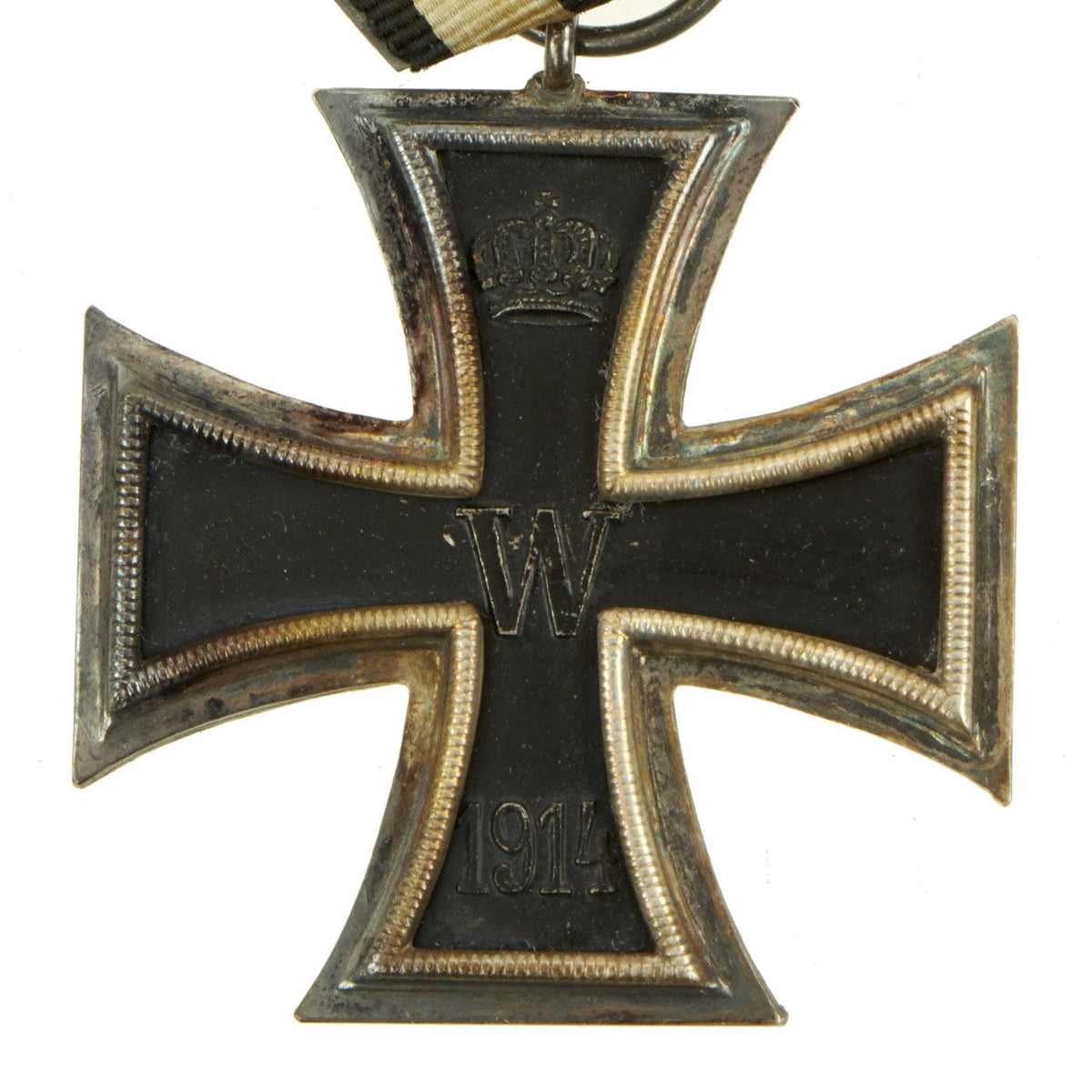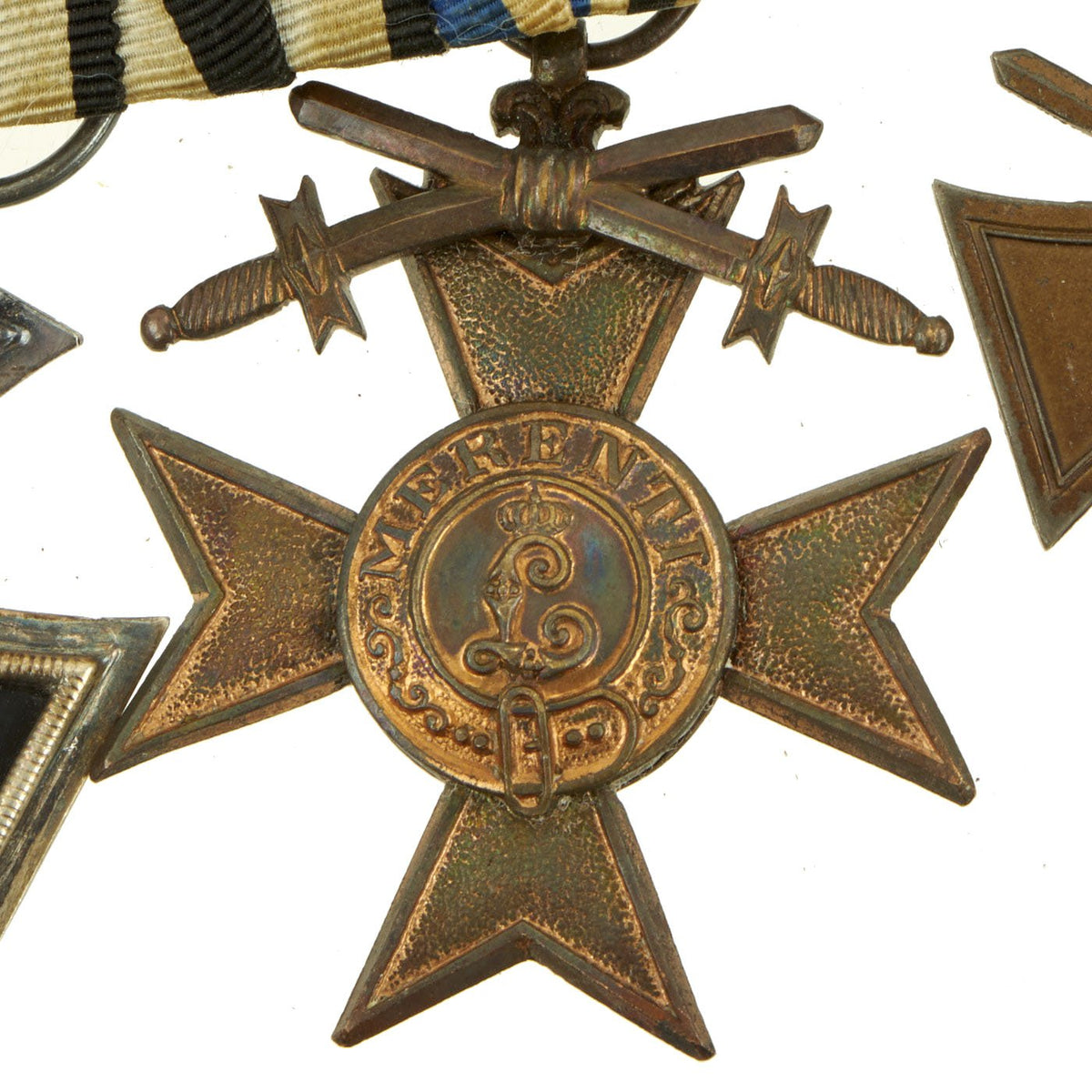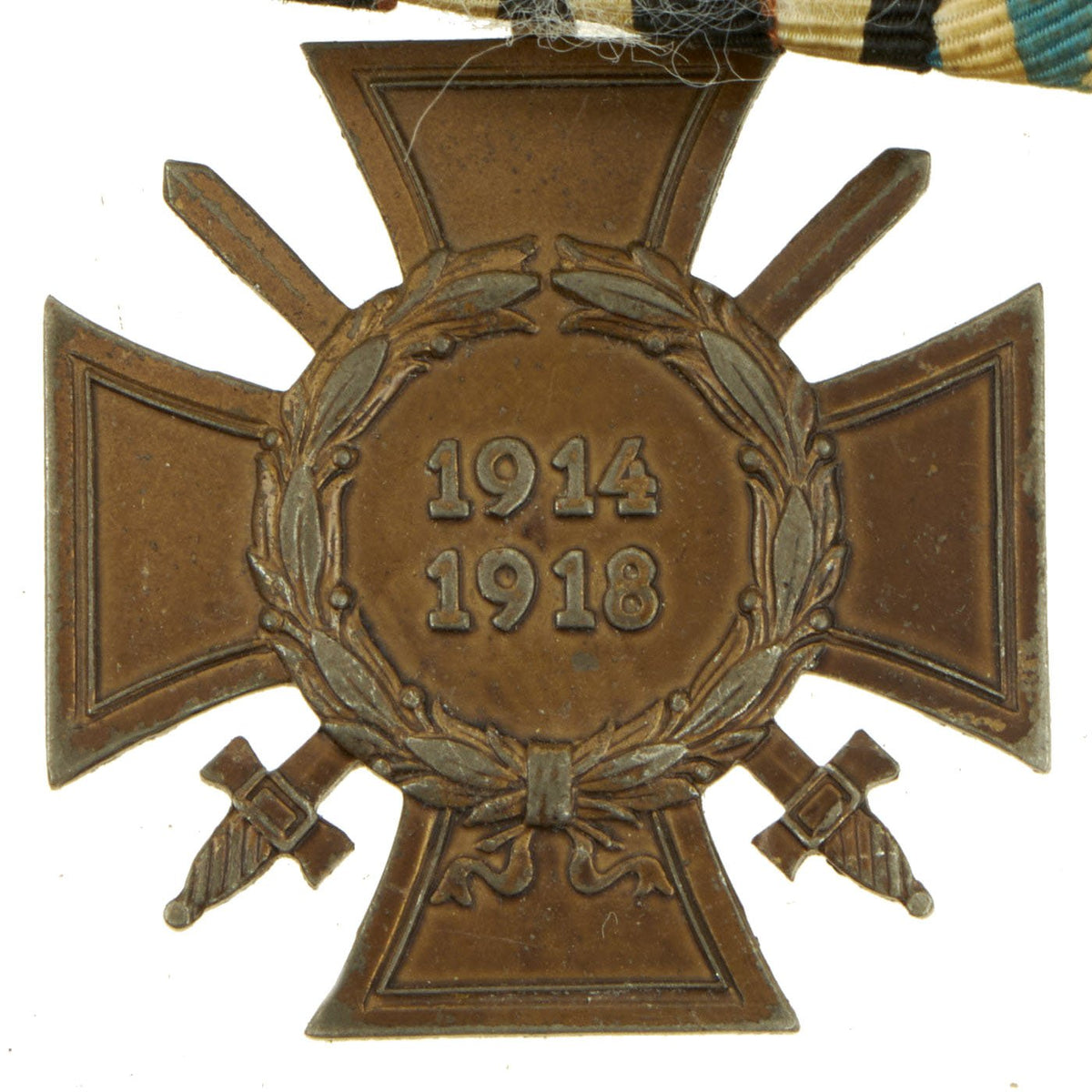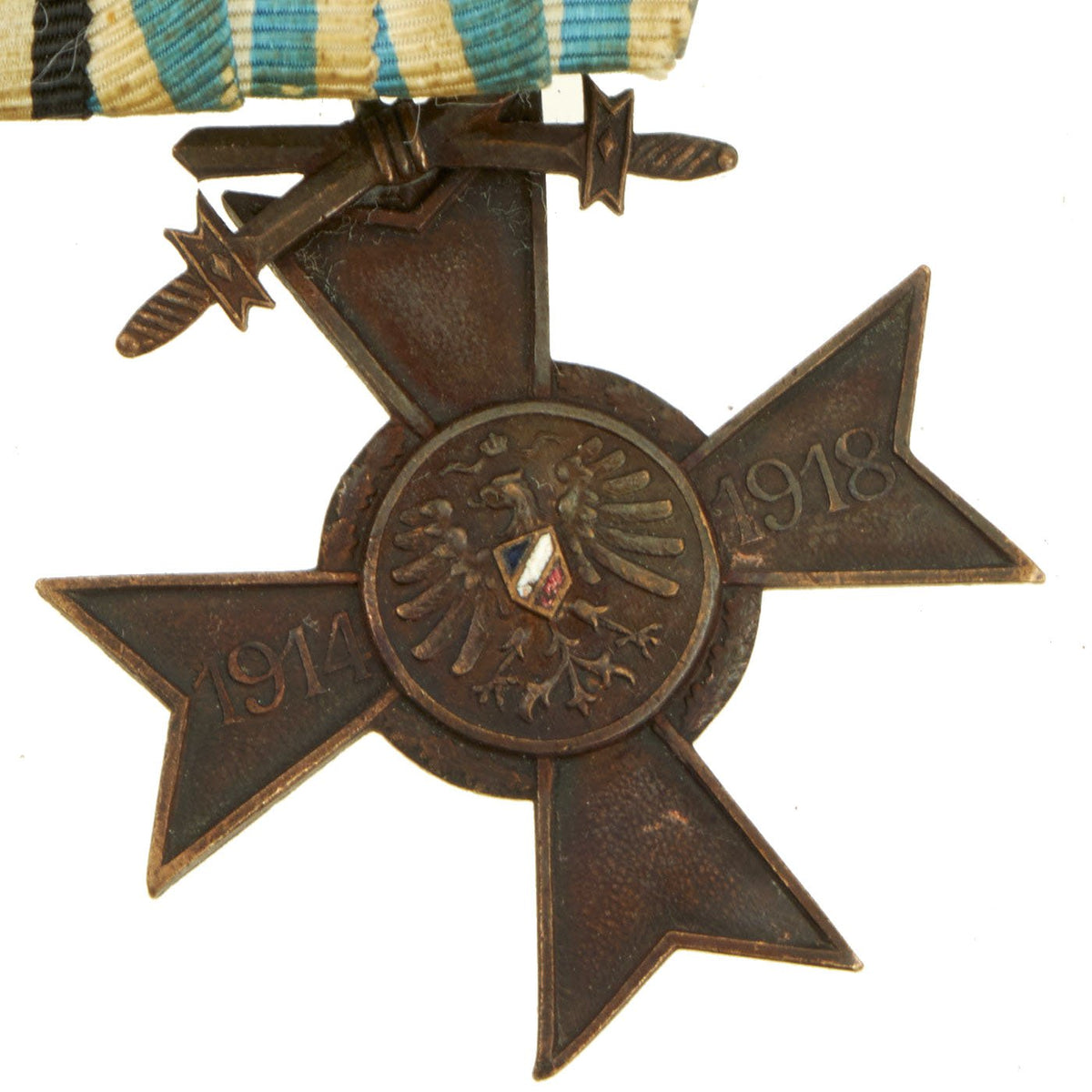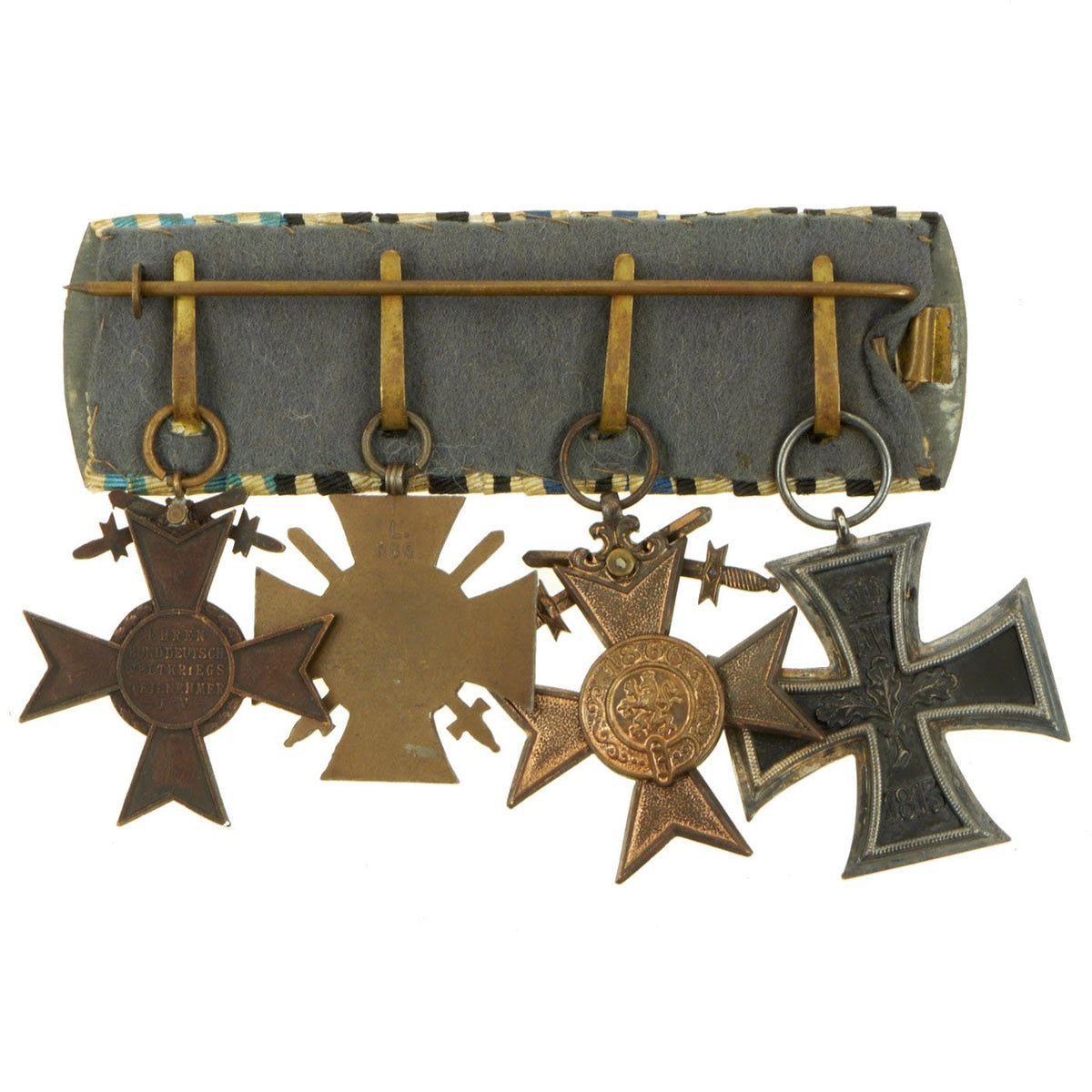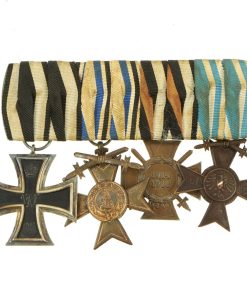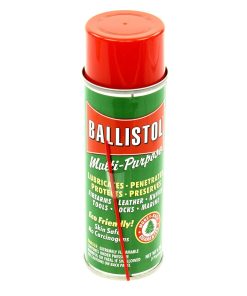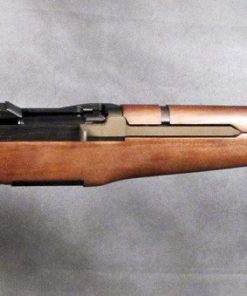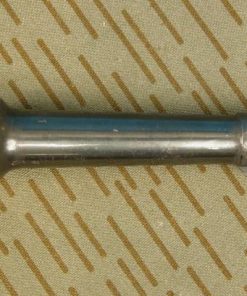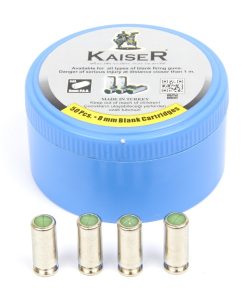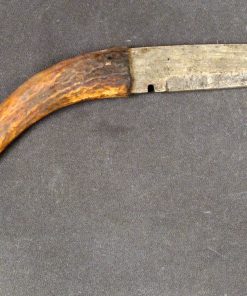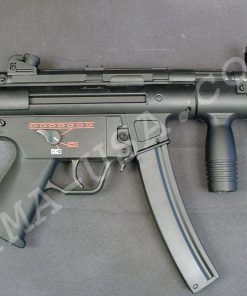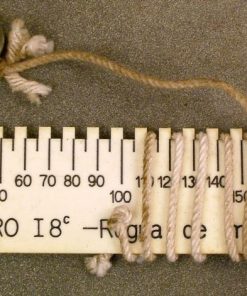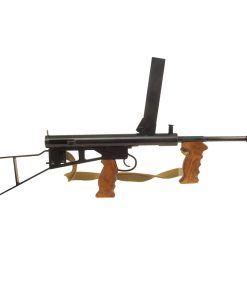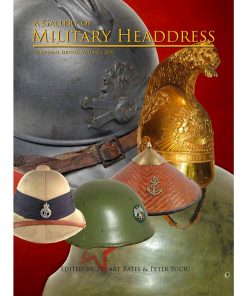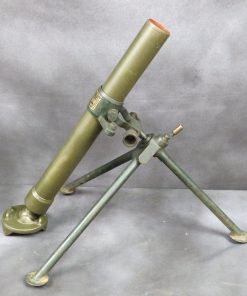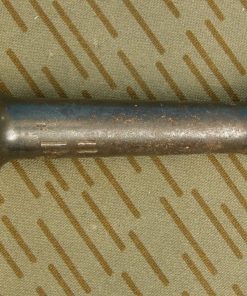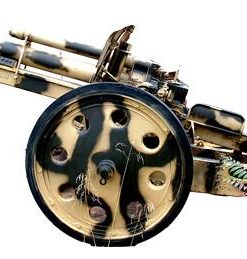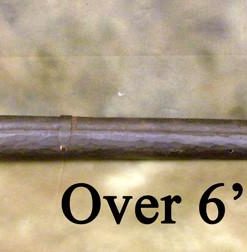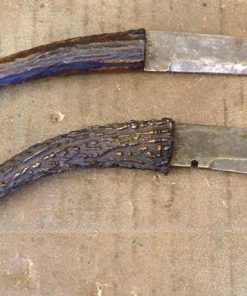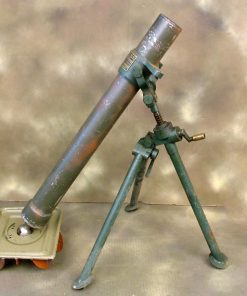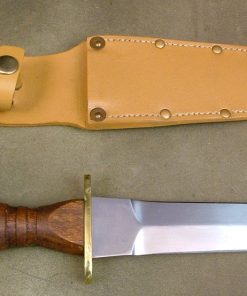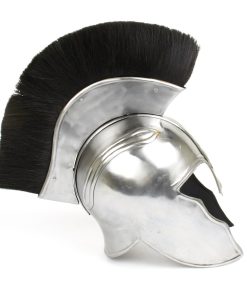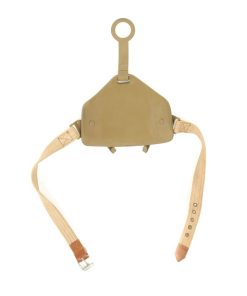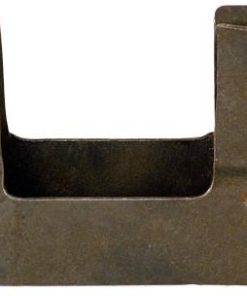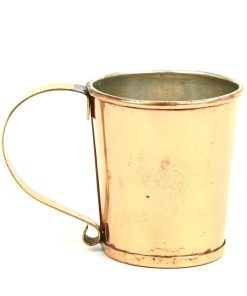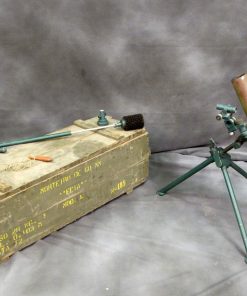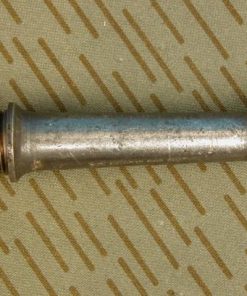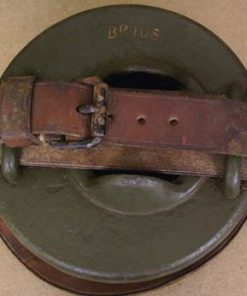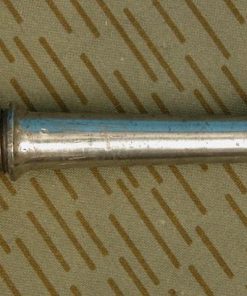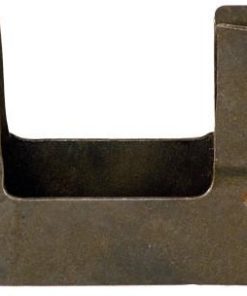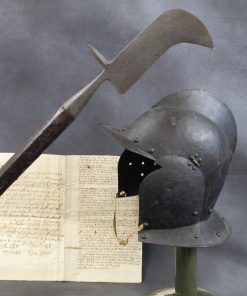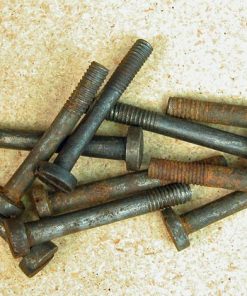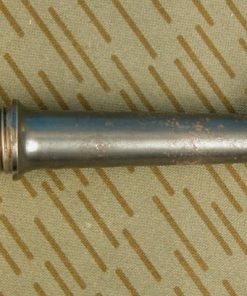Original German WWI Era Medal Bar with EKII, Bavarian Merenti Cross & More – 4 Awards Original Items
$ 295,00 $ 118,00
Original Item: One-of-a-kind. This is a very nice genuine medal bar, owned by a German soldier who fought during WWI, and was apparently from the Kingdom of Bavaria. During the early Weimar republic he was issued two additional medals to commemorate his WWI service. The condition overall is good, though there is fading of the ribbons and oxidation to the awards, so this was probably on display.
The set of 4 medals offered in good condition is mounted on a blue felt covered metal backing board with a long attachment pin, and consists of the following:
– Imperial German WWI Iron Cross 1914 2nd Class Medal (Eisernes Kreuz 2. Klasse, or EKII)
– Bavarian Merenti Cross of Military Merit with Swords, 3rd Class, 1905.
– German WWI Honor Cross of the World War 1914/1918 (Hindenburg Cross) Medal
– German WWI War Honor Cross 1914-1918 with Bavarian Ribbon
Below is an explanation of each medal in detail:
German WWI Prussian Iron Cross 2nd Class with Ribbon:
Established by Frederick William in 1813 for gallantry in action, the Eisernes Kreuz (EK) decoration was revived several times for later conflicts. The bulk of the issues are divided into 1st and 2nd class versions, but a rare and superior ‘Grand Cross’ was also awarded for successful field commanders. During WW1 the lower decoration was freely awarded with 5½ million second class types issued. Originally, the Iron Cross was an award of the Kingdom of Prussia, however given Prussia’s pre-eminent place in the German Empire formed in 1871, it became an award for all of Germany.
The basic design of the WW1 crosses is a central cross patee struck from iron and mounted in a silver frame which has a raised crenulated decorative border. The obverse of the cross bears the date 1914 under a crowned ‘W’ monogram. Reverse bears an oak leaf cluster with the date of the decoration’s institution, 1813 underneath – the crowned initials of Frederick William are in the top arm above the oak leaf cluster. Suspension for second-class types is by means of a ring, and frequently this ring bears a maker’s stamp.
Please examine the edge seam for authentication, which is not present on reproductions. Iron crosses were commonly constructed from an iron core sandwiched in a surrounding two part silver frame, normally the seam of these two silver parts is visible around the edge of the cross as is seen on this fine example. There is a faint maker mark on the hanger ring.
Bavarian Merenti Cross of Military Merit with Swords, 3rd Class 1905.
Order of Military Merit was instituted in 1866 in 5 Classes. In 1905 the Cross of Military Merit was revised initially to 2 Classes and in 1913 to 3 classes. Each class was awarded according to the rank of the recipient and could be issued with or without swords (for peace or war time period) and crown (for a 2nd award). The old non-enameled 2nd Class became the 3rd Class and was changed from silver to bronze. The old 1st Class became the 2nd Class. The new 1st Class was identical to the 2nd Class except that it was gilt rather than silver.
This is the third class award, indicating it was received by a low rank soldier, and the swords indicate it was awarded during wartime.
Hindenburg Cross with Crossed Swords (for combat):
The Honor Cross of the World War 1914/1918 (German: Das Ehrenkreuz des Weltkriegs 1914/1918), commonly, but incorrectly, known as the Hindenburg Cross was established by Field Marshal Paul von Hindenburg, President of the German Republic, by an order dated 13 July 1934, to commemorate the distinguished deeds of the German people during the First World War. This was Germany’s first official service medal for soldiers of Imperial Germany who had taken part in the war, and where they had since died it was also awarded to their surviving next-of-kin. Shortly after its issuance, the government of NSDAP Germany declared the award as the only official service decoration of the First World War and further forbid the continued wearing of German Free Corps awards on any military or paramilitary uniform of a state or NSDAP Party organization.
This award bears a maker mark on the back.
The German War Honor Cross (Kriegsehrenkreuz) was instituted in one class only in 1925 by the Munich-based Registered Non-commercial Association “Honorary Union of German World War Participants” (Ehrenbund deutscher Weltkriegsteilnehmer E.V. [eingetragener Verein]), one of numerous post-WWI veterans’ organizations that mushroomed amidst the chaos of the Weimar Republic. The Union itself was founded on February 13, 1925 in Munich (Bavaria) and its headquarters was located at Ungererstraße 30, München 23. The medal is marked with 1914 and 1918 on two arms of the cross, with an Imperial Eagle in the center. The ribbon color used was either the imperial tri-color, or the state colors of the recipient.
The very idea of creation of yet another new decoration for German veterans came as a reaction to the disassociation of the former Emperor Wilhelm II residing in Doorn in exile from the still existing and widely popular German Honorary Commemorative Badge of the World War (Deutsche Ehrendenkmünze des Weltkrieges). Thus, according to founders of the newly introduced decoration, it should have taken position of the main, but still unofficial, distinctive badge of the German Great War veterans. However, going forward, it should be admitted that “mission” of Kriegsehrenkreuz had failed.
Fast Shipping with Professional Packaging
Thanks to our longstanding association with UPS FedEx DHL, and other major international carriers, we are able to provide a range of shipping options. Our warehouse staff is expertly trained and will wrap your products according to our exact and precise specifications. Prior to shipping, your goods will be thoroughly examined and securely secured. We ship to thousands clients each day across multiple countries. This shows how we're dedicated to be the largest retailer on the internet. Warehouses and distribution centres can be located throughout Europe as well as the USA.
Note: Orders with more than one item will be assigned a processing date depending on the item.
Before shipping before shipping, we'll conduct a thorough inspection of the items you have ordered. Today, the majority of orders will be delivered within 48 hours. The delivery time will be between 3-7 days.
Returns
The stock is dynamic and we cannot completely manage it because multiple stakeholders are involved, including our factory and warehouse. So the actual stock may alter at any time. It's possible that you may not receive your order once the order has been made.
Our policy is valid for a period of 30 days. If you don't receive the product within 30 days, we are not able to issue a refund or an exchange.
You can only return an item if it is unused and in the same state as the day you received it. You must have the item in its original packaging.
Related products
Uncategorized
Uncategorized
Uncategorized
Uncategorized
Uncategorized
Australian WWII Owen MK1 Machine Carbine SMG Custom Fabricated Replica with Sling Original Items
Uncategorized
Uncategorized
Uncategorized
Band of Brothers ORIGINAL GERMAN WWII Le. F.H. 18 10.5cm ARTILLERY PIECE Original Items
Uncategorized
Uncategorized
Uncategorized
Uncategorized
Uncategorized
Uncategorized
Uncategorized
Uncategorized
Armored Burgonet Helmet & Polearm from Scottish Castle Leith Hall Circa 1700 Original Items
Uncategorized
Uncategorized
Uncategorized
Armoured Fighting Vehicles of the World: AFVs of World War One (Hardcover Book) New Made Items
